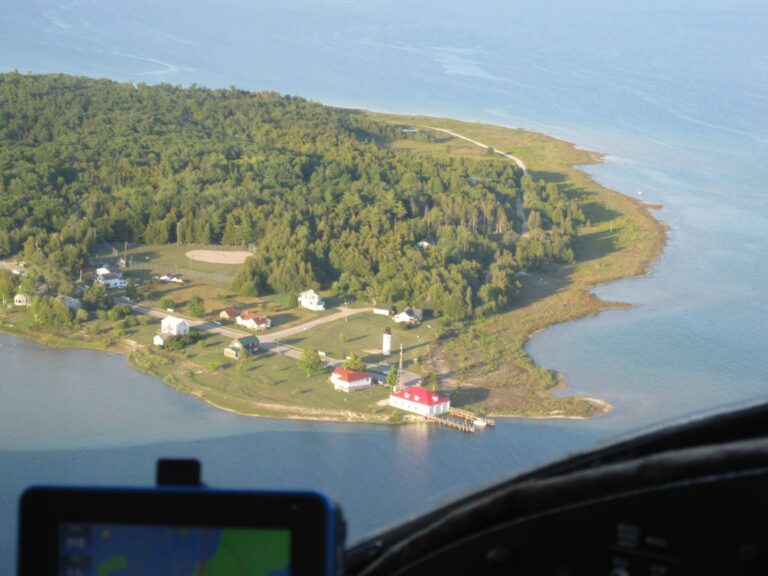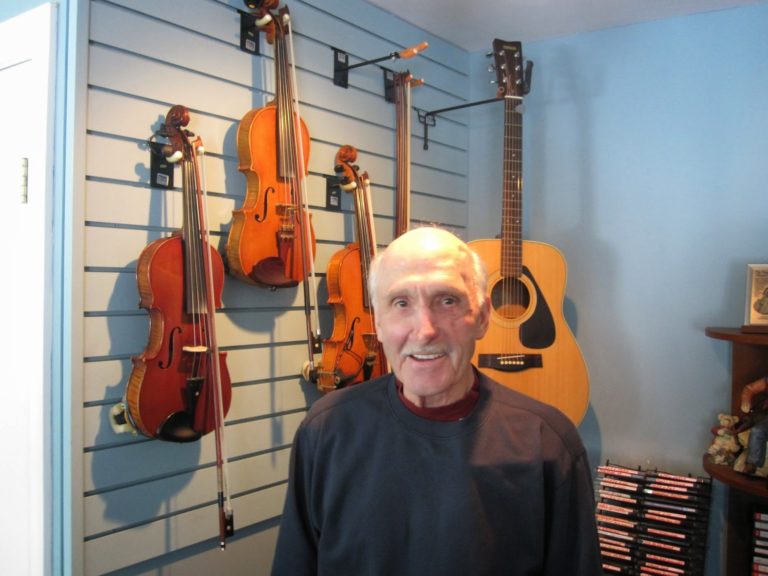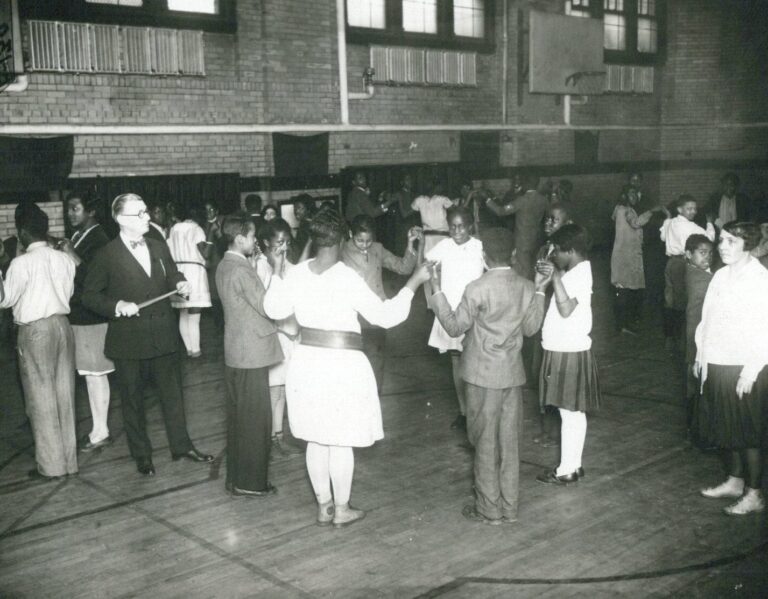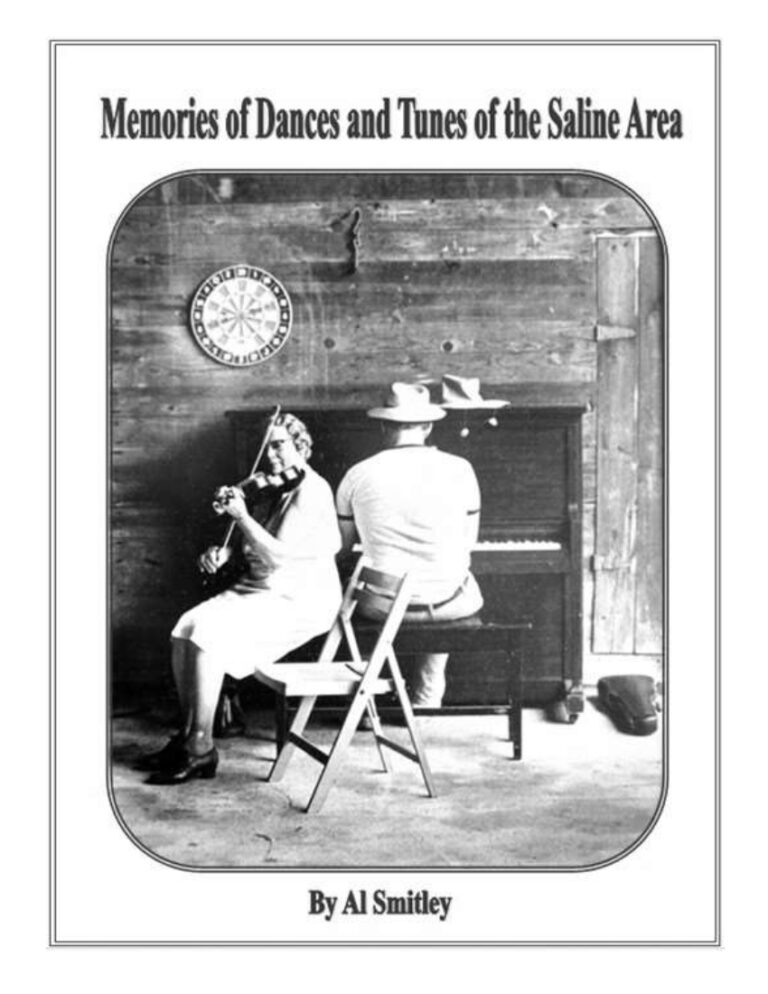
By Trae McMaken
I’ve been chasing the history of this tune , Whiskey Point Jig, for at least 10 years (I recorded it on an album 10 years ago).
Patrick Bonner of Beaver Island was recorded playing a jig for which no title was passed on. Michigan fiddler and folklorist Glenn Hendrix would later transcribe many of Bonner’s tunes, including much biographical information, and release it as a book titled An Island of Fiddlers. Lately, Hendrix has teamed up with Donegal fiddler and folklorist Caoihmin Mac Aoidh to add to and re-release an Island of Fiddlers both in the US and Ireland (good on ya’!) because Beaver Island was settled by Irish immigrants from the Donegal Isle of Arranmore.
But this post is about the jig. Glenn Hendrix named it “Whiskey Point,” lacking any other known title. Whiskey Point is a point on Paradise Bay of Beaver Island, notable because the lighthouse dominates it, one of the first sights that passengers on the ferry see when they approach the island. It’s great to have a tune named after the place and also, it’s a catchy title.
But where does the jig come from? It is not styled as an Irish jig. It is a northern style 6/8 tune, and Bonner was not the only person to play it — or at least some variation of it. Another iteration of the tune can be heard on Michael Loukinen’s documentary Medicine Fiddle, played, I believe, by Mike Page of Belcourt, North Dakota, starting at timestamp 05:23. But this is where the story of the tune begins to diverge.
Where as Patrick Bonner played the tune with A and B part in the key of D, Mike Page plays in G, and while arguably his second part is “the same” as Bonner’s, it is also significantly varied.
Then comes Jasper and Mary Warner of Charlevoix. In a 1987 field recording made by Eliot Singer, Mary suggests to Jasper that they play this tune while discussing dancing to hornpipes. Mary jogs Jasper’s memory by singing the first notes with the call “first couple cross over and. . .” The two then launch into the tune. Their “A” part is unrecognizable from Bonner and Page’s tunes and will be labeled “C”, but their second part is our “B” part. To complicate it more, they play their “C” part in G but the B part is debatably in D.
The situation perplexed me, so one time when I was with the late Danny Johnston, I asked him about the tune. He wasn’t sure at the time, but on a later occasion when I was at his house, he told me he remembered it was from an old quadrille, but he didn’t play it and wasn’t sure of the title.
Then, I stumbled upon this recording of Eddie Krantz (from the Thumb of Michigan) playing a quadrille:
Here Eddie Kranz from the Thumb of Michigan plays the tune with the B part first, then the A part, all in the key of D. His styling and melodic variations are again unique, but the tune is undeniably the same. Eddie Kranz arguably plays this much more in a quadrille style.
On Paul Gifford’s personal music site, there is a recording of he and Elmer House (fiddler from the Soo) playing the tune on “Mackinac Island, Michigan, August 2, 1976.” The A part has some unique variation, but it is definitely the same tune, and played in G with the parts in the same order as Bonner. Sadly, the tune name is still unknown. It’s the 7th tune on this page: http://www.giffordmusic.net/68G.html
So:
- Patrick Bonner: AB, key of D
- Mike Page: AB, key of G
- Jasper and Mary Warner: CB, key of G and (maybe) D.
- Eddie Kranz: BA, key of D
- Elmer House: AB, key of G.
I spoke with Glenn Hendrix about the tune over email, and he suggested that perhaps the tune could be found in the 1890 tune book Gems of the Ballroom, a now rare book published by northern Illinois musician George McCosh. Once upon a time, this book was a major influence in the region’s dance music. I myself don’t have McCosh’s book, and it is not easily found online, but if you want to find a tune from Gem’s of the Ballroom, go look in tune collection of Michigan fiddler Les Raber (1911 – 2000). Les Raber’s tunes have been transcribed from recordings and turned into the book Come Dance With Me: Original Fiddle Compositions and Favorite Tunes of Les Raber.
And what would you know, there’s a quadrille from Gems of the Ballroom, as played by Les Raber, titled Fascination Quadrille fig. 3. Here’s the dots: https://tunearch.org/wiki/Fascination_Quadrille,_Figure_3
Now, the first part of this tune is remarkably similar to our B part. So similar in fact that I would argue it is essentially the same part. But Fascination Quadrille fig. 3 also has two other parts that bear little to no resemblance.
So we’re left with:
- Patrick Bonner: AB, key of D
- Mike Page: AB, key of G
- Jasper and Mary Warner: CB, key of G and (maybe) D.
- Eddie Kranz: BA, key of D
- Elmer House: AB, key of G.
- Les Raber, Fascination Quadrille fig. 3: B (key of G) D (key of D), B(key of G), E (key of C).
Paul Gifford has this to say about the above tunes:
“The tune mentioned by the Warners is “Life on the Ocean Wave” or “Ocean Waves,” with a singing call “First Two Ladies (or ‘Head Two Gents’) Cross Over.” Very popular for a first change. The first part is played twice and the second once, to allow everybody to get home.
The tune played by Eddie Kranz is his version of “Pacific Quadrille.” I originally learned this from Chet Parker, about 50 years ago, and I also learned the second change, but I never saw it in print until today, when I found this: https://www.loc.gov/resource/sm1879.08661.0/?sp=4 O. F. (Cub) Berdan was a music publisher in Detroit and Adrian and published this in 1879. It probably was his most popular tune. I also found an LC catalog card referring to a recording of an unknown group playing it in 1938 at the National Folk Festival: https://www.loc.gov/item/afc9999005.25673 I’m sure this must have been a group from around Alma, called the “Michigan Lumberjacks.”
Finally, the “Fascination Quadrille” is different (in C/G/C/F). It appears as the first page in the first of 12 booklets published in the series “Gems of the Ball Room,” and widely sold through Sears & Roebuck. Maybe for that reason it was widely known.
Berdan’s tunes were popular in their day, but his printed music is quite scarce!” — Michigan Fiddle Music Historian Paul Gifford
The Pacific Quadrille may very well be the origin of Whiskey Point Jig. It has enough shared ideas and parts that the various fiddlers could have easily boiled it down into a two part jig. That is as likely as any other option, but the ideas of the tune are also more widespread, with similar phrasings and ideas found across a range of tunes. Fiddle music has a life of its own, spanning hundreds of years and unknown numbers of musicians. It’s nice to be able to trace a likely provenance for Whiskey Point Jig. But I think I’ll keep calling it “Whiskey Point Jig” — and playing it too.



